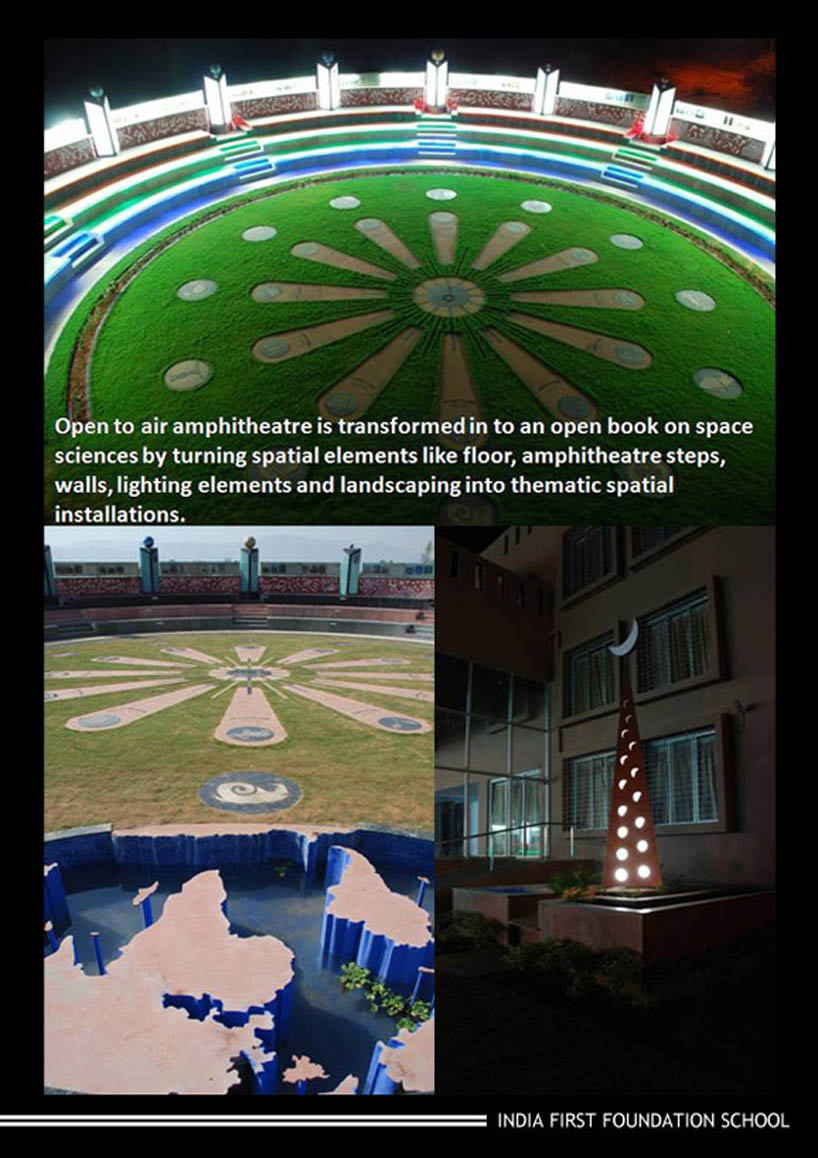
india first foundation school by Yatin Pandya from india
designer's own words:
To educate, is to develop mentally, morally and aesthetically. Holistic learning therefore is about information, exposure, analysis, understanding and explorations. It is about learning more than the teaching. This calls for self indulgence and initiatives from the students. How can the built environment contribute in the same? At India First Foundation (IFF) school campus in Karjat, an attempt has been made to overlay spatial installations to basic physical envelop in order to inculcate the habit of enquiry, to raise the level of exposure and to make the education interactive. At IFF, the court, the corridors and the classes are animated with diverse installations in consonance with their space conditions, designated functions and the desired format of its conduct. These multimedia 3D display collages consist of curriculum related information in an interactive and exploratory format. While retaining as teaching and learning tool within the framework of the course curriculum, they extend beyond the text book with their dynamic formats for higher intensity of interactivity in order to sustain interest, ease comprehension and inspire explorations and self indulgence. These learning tools not only help imbibe the understanding of subject matter first hand but also go beyond to inculcate lateral thinking.
Installations such as these have morphed spaces into places with vitality and voids into virtual labs with virility. For example an open to air amphitheatre is transformed in to an open book on space sciences by turning spatial elements like floor, amphitheatre steps, walls, lighting elements and landscaping into thematic spatial installations. Centre of the circular amphitheatre is punctuated with a Sundial. The floor landscape is defined by twelve radiating stone petals alternated by the soft grass cover. Each stone petal has hand carved, laser burnt and inlaid stone and steel elements representing twelve ‘Rashis’ with accurate depiction of constellation of stars as per the zodiac calendar. Reference to three seasons is made in three amphitheatre steps with natural stone rendering each in colour of Red, Green, Black depicting summer, monsoon and winter respectively. Seasons are also pronounced by planting trees along the outer periphery of the wall alternatingly blooming and fruiting in respective seasons. The foliage of these large trees creates the natural green back drop to the amphitheatre muffling unwanted sounds. Shrubbery consists of fragrant plants for their lingering aroma at nights, when amphitheatre is in use. Lighting elements are designed in steel and glass with the scientific, at glance, information on nine planets and Sun and Moon etched and digitally printed. Cultural geography of the world is depicted by back lit digitally printed glazed parapet depicting wonders of the ancient, medieval and modern world along with National flags of all the countries of the world. Digital craft is juxtaposed with vernacular art. Two hundred feet long opaque parapet wall with terracotta backdrop and white rendering, in local Warli painting tradition depicts the evolution of world from ‘Hiranyagarbh’ to Aryan village to epics like Ramayan and Mahabharat, invasions, colonization as well as contemporary world icons. Water body in front of the stage portrays the world atlas with five fountains representing the continent each. Obelisks on the sides of the stage designed as tall pyramid shaped light features are a modern day abstractions of the ‘Dipstambh’ of temple complexes in Maharashtra region. These pyramidical installations representing Sun and Moon have laser carved phases of solar eclipse and crescents of moon respectively. Panel above the proscenium portal of the stage depict the evolution of life forms ranging from fish, amphibian and reptiles to dinosaurs, mammals and human being. Thus a total microcosm within the cosmos.
Likewise other open, semi covered and enclosed spaces of the campus have also been animated with educational installations. For example the dining hall got animated with installations of spice route with live samples of fifty one spices round the world as well as representation of navigation vessels of the time. Another patina overlaid is of cuisines of India in the form of wall installations and LED light hangings. They not only depict over twenty cuisines of India but also inform about their ingredients, calorie as well as nutritional values. School corridors have live installations of games and puzzles along the path ways. Thus it adds information as well as entertainment. It remains aesthetic as well as educative. Above all interactive.
There are some permanent displays mounted in some halls which connect student to the rest of the world. An exhibition hall called global village has well researched 192 panels, one each on country of the world carrying at a glance information about the nation. Information such as each country’s national flag, national symbols, demography, landscape, currency, national features, people, flora, fauna,architecture, sports etc. These panels are hung as if a drooling foliage, on a free standing metal stand as treelike abstract installation. The ceiling is matt black with linear slits of LED lighting illuminating the whole space from the ceiling. These lighting slits are the datelines (hour lines) of the world atlas corresponding to GMT. Thus they not only become lighting and visual features but also an informative one. Glossy flooring reflect this lighting and enhance its spread. The sixty feet long wall creates the backdrop of faces and attire of people from round the world depicting the diversity of culture and places. Three dimensional self lit cubical protrusions from this plane are the photos and information on hundred personalities of the world from diverse fields that have left their mark on humanity. These may serve as role models to the young students and inspire. Touch screen kiosks and remote switches make their operations interactive as well.
Similarly at IFF, every classroom and laboratories are provided with wall installations based on the specific curriculum and course contents of the given standard. These installations in the form of sixteen feet long panels each consisting of models, charts, puzzles, kinetic sculptures, digital displays and do it yourself experiments offer value additions to a neutral space and transcend them as inspiring learning and teaching tools in addition to remaining visual interest elements. They serve as stimuli to trigger initiatives from students and teachers alike and help inculcate spirit of learning amongst the pupils through self indulgence and explorations. A much needed dimension in true values based education.
Open to air amphitheater is transformed in to an open book on space sciences.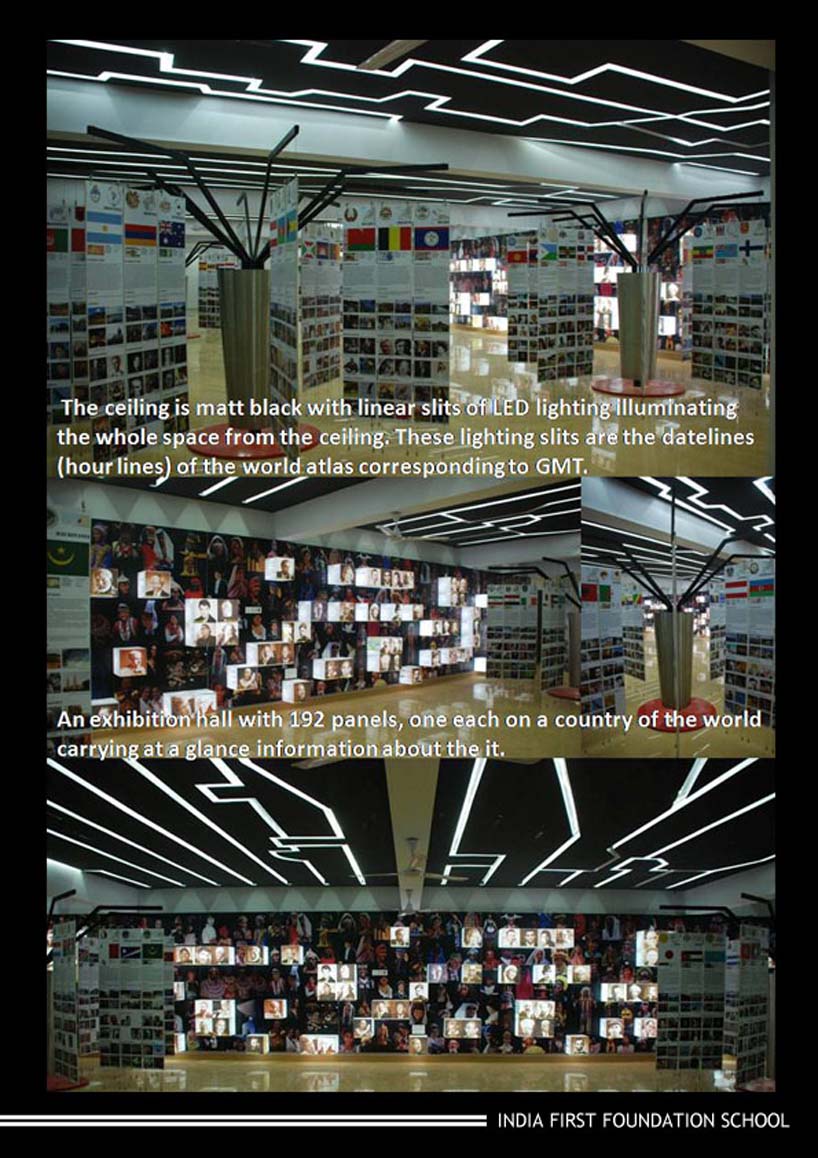 An exhibition hall with 192 panels, one each on a country of the world carrying at a glance information about the it.
An exhibition hall with 192 panels, one each on a country of the world carrying at a glance information about the it.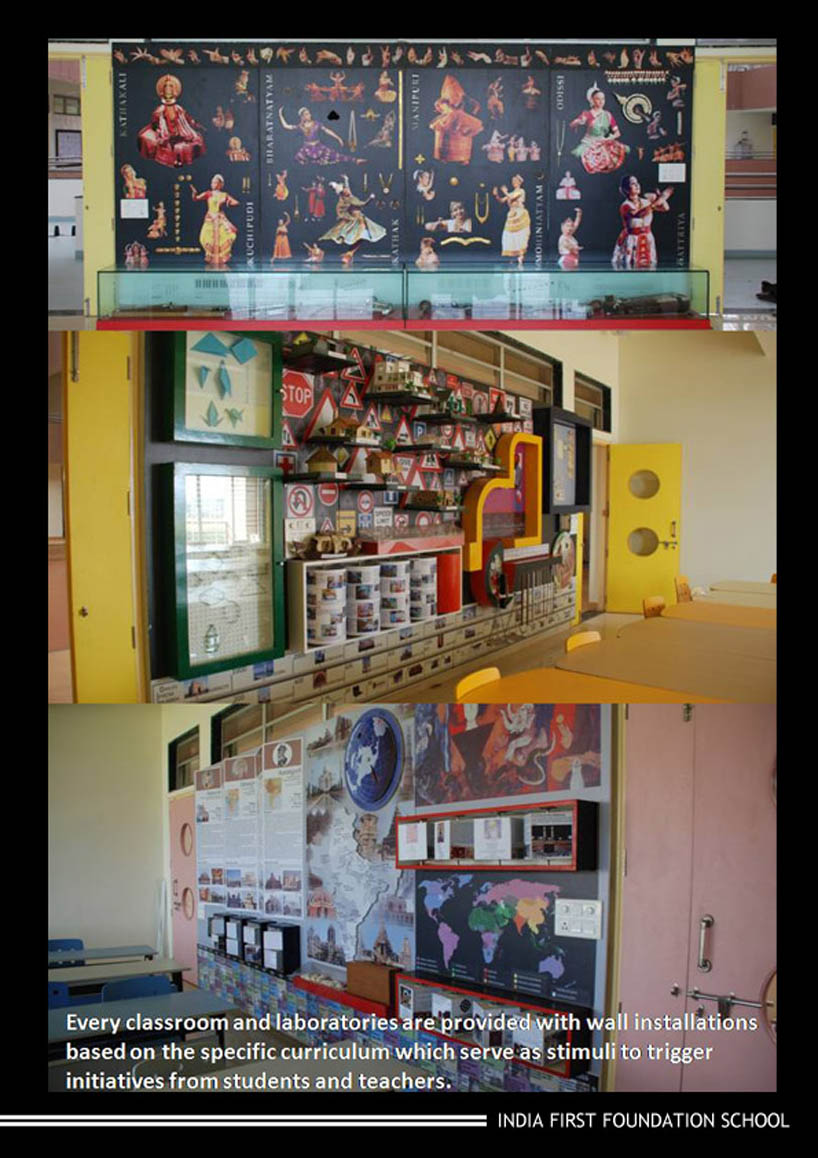 Every classroom and laboratories are provided with wall installations based on the specific curriculum.
Every classroom and laboratories are provided with wall installations based on the specific curriculum.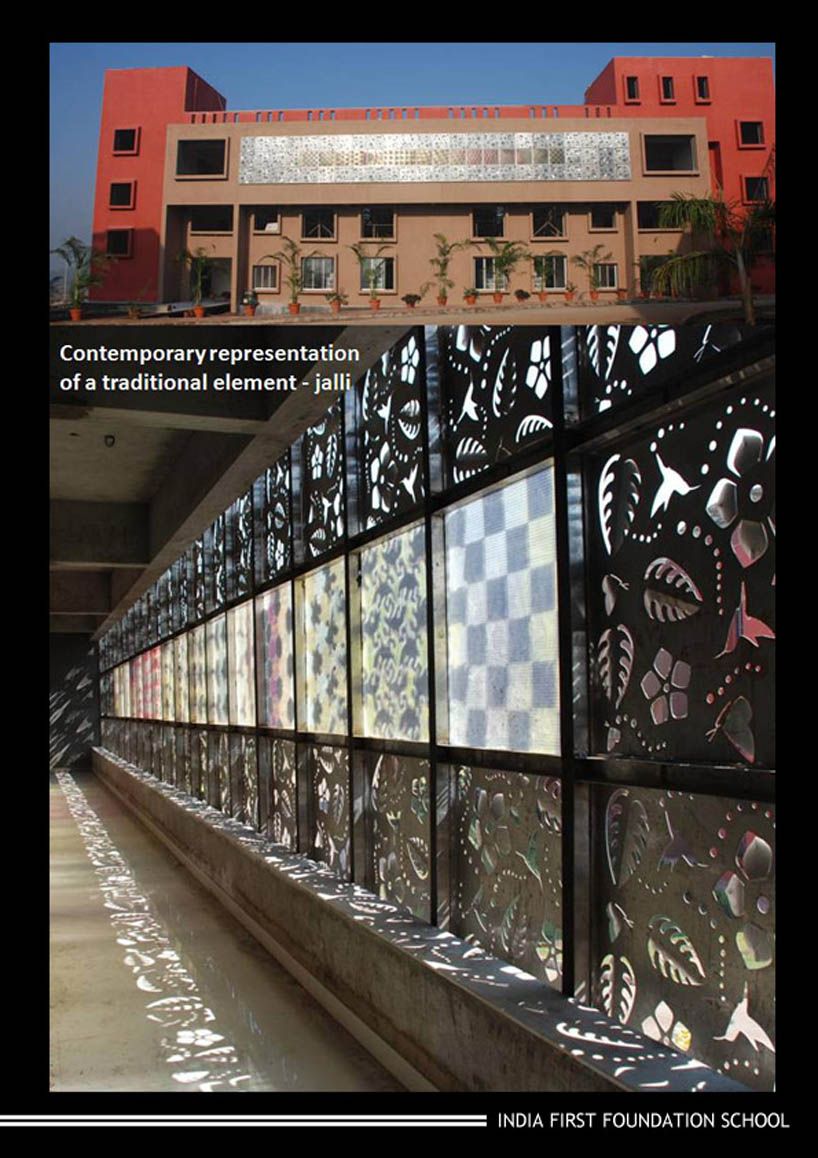 Contemporary representation of a traditional element – jalli.
Contemporary representation of a traditional element – jalli.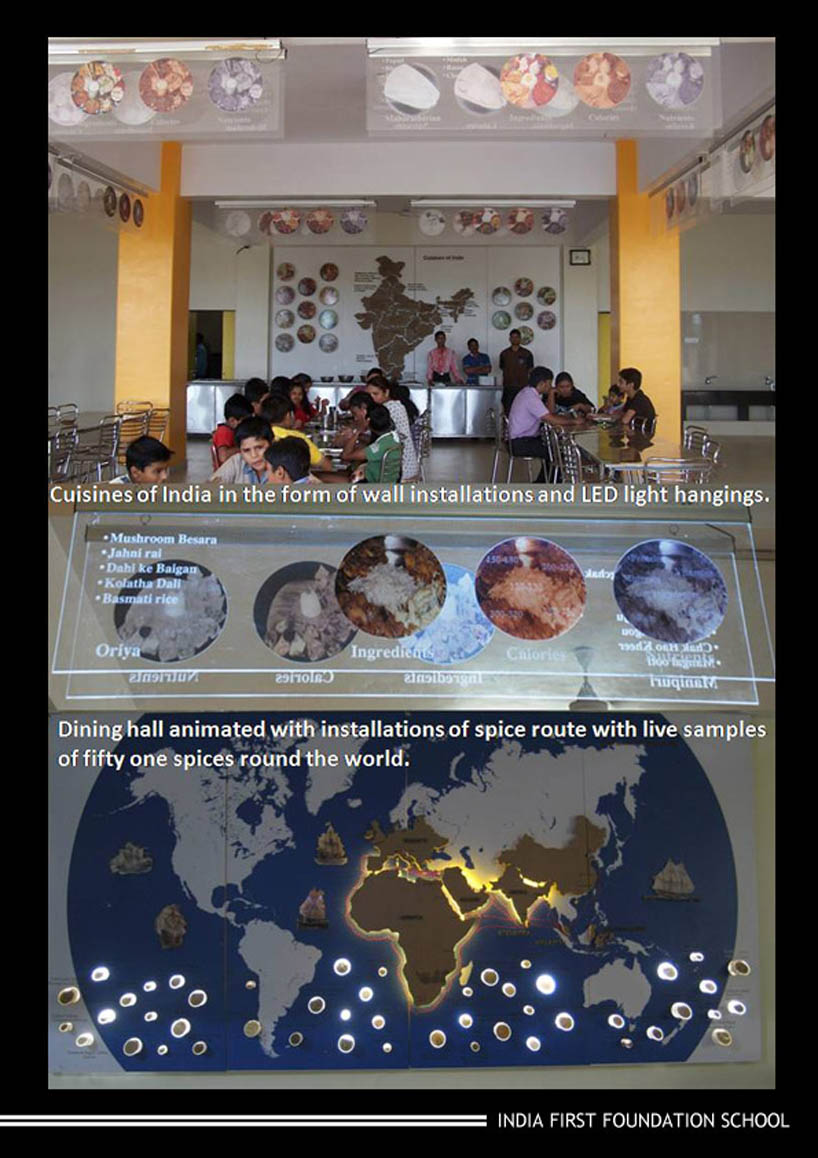 Dining hall animated with installations of spice route with live samples of fifty one spices round the world.
Dining hall animated with installations of spice route with live samples of fifty one spices round the world.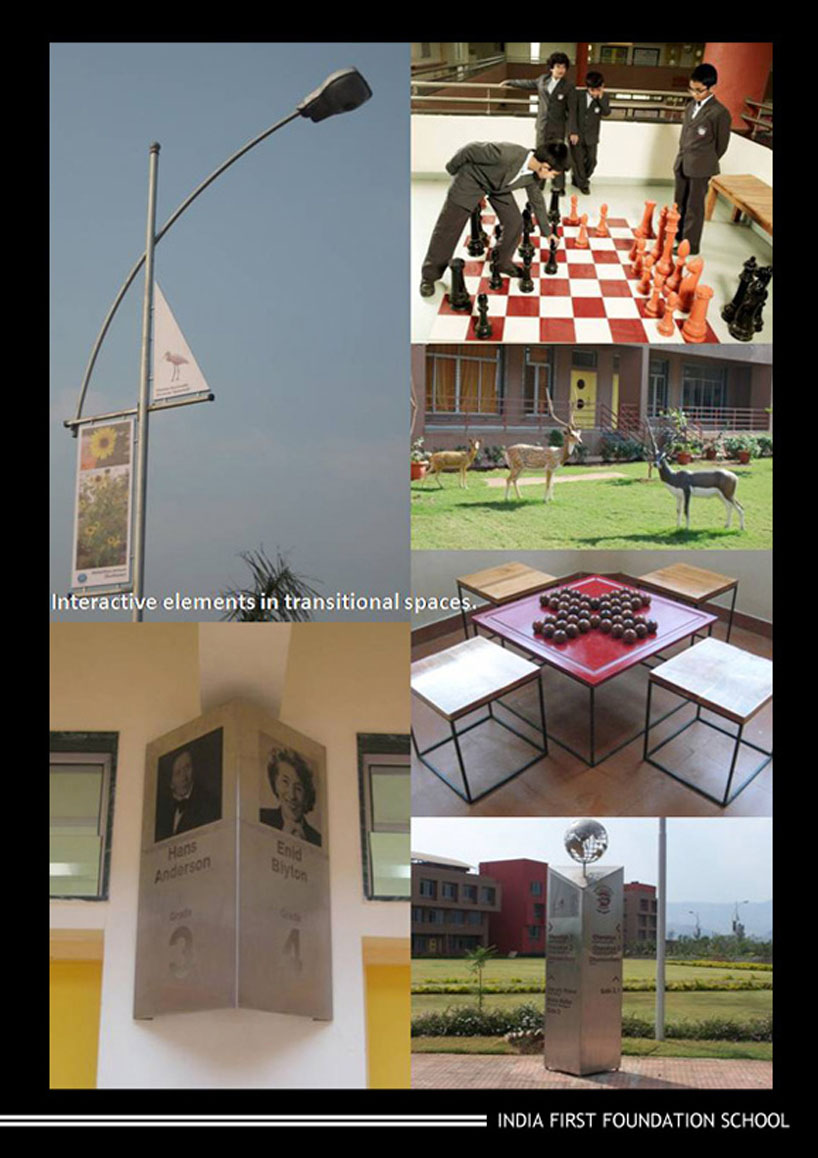 Interactive elements in transitional spaces.
Interactive elements in transitional spaces.